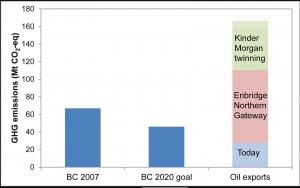by Simon Donner
In the decision to recommend the Northern Gateway Pipeline for approval by the Canadian government, the National Energy Board ignored the very purpose of a pipeline: getting the product to market.
The panel did not consider the impact the pipeline would have on oil sands development – creating the product – or the impact of using the oil that would be transported by the pipeline – getting someone to use the product.
This is like making a decision about a road without asking whether it would affect the communities the road is supposed to connect. For one, the emissions embedded in the oil that would be transported by the proposed pipeline make a mockery of provincial and federal greenhouse gas emissions targets.
Nevermind, said the Joint Review Panel. From the report:
Many people said the project would lead to increased greenhouse gas emissions and other environmental and social effects from oil sands development. We did not consider that there was a sufficiently direct connection between the project and any particular existing or proposed oil sands development or other oil production activities to warrant consideration of the effects of these activities.
While we can sympathize with the panel, which has specific terms of reference that places some issues outside their mandate, the logic in the report is fatally flawed.
As Chris Turner writes, the core argument for additional pipelines from Alberta has been to encourage economic expansion, via increased operations in the oil sands. If the panel is correct, and the Northern Gateway pipeline would not lead to any further oil sands development, then why build the pipeline?
Either the panel is wrong, or the case for the pipeline is wrong. Which is it?

